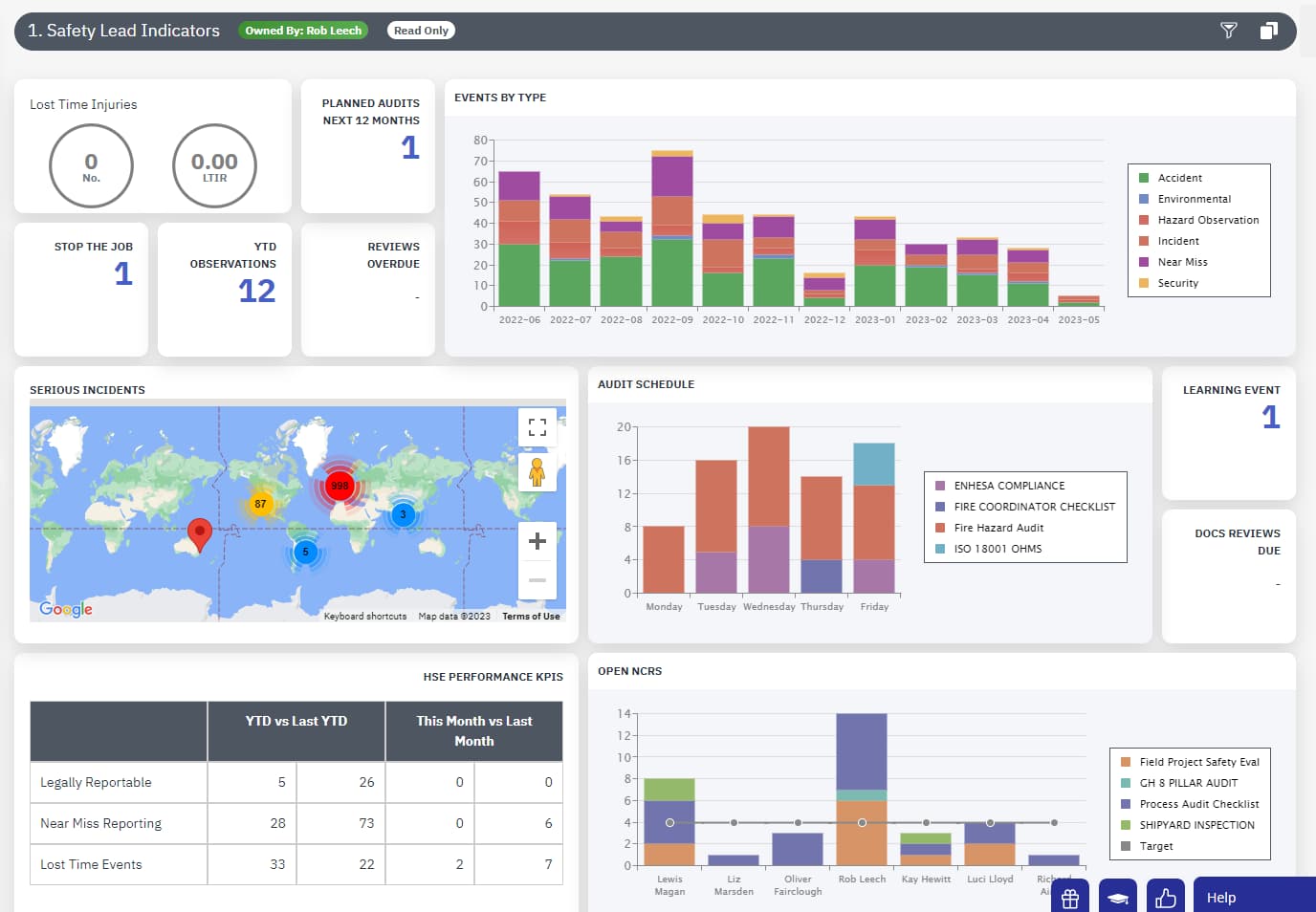The road to corporate resilience: connecting EHS to ESG

How do you build a more proactive approach to safety? Is there a way to make your organisation more resilient to unforeseen events or risks? These are questions Richard has been asking himself, as a health and safety supervisor at a manufacturing company.
While sitting in his office, looking at his latest Environmental Health and Safety (EHS) metrics, he feels there’s a missing link that could provide a more accurate measure of corporate performance. At that moment, he receives a call from management letting him know that a typhoon has hit the Philippines, the location of their major supplier.
Richard immediately turns on the news and sees the devastation which has occurred. He reaches out to his contact in the region and soon learns that thankfully, all employees are safe; however, a major part of the manufacturing facility was destroyed which will delay production for months.
At that moment, Richard finally had the answers to the questions he had been thinking about. How do you build a more proactive and resilient approach for your business? Simply put: Combining both EHS and ESG reporting.
Keep reading to uncover:
- What is ESG reporting?
- 3 ways this can make your organisation more resilient
- EHS as your foundation for ESG reporting
- The path forward
CHAPTER 1
What is ESG reporting?
ESG reporting, also known as sustainability reporting, carbon accounting, or emissions reporting, is getting a comprehensive view of your organisation’s emissions. This can be broken down into three different areas:
Scope 1: An organisation’s Scope 1 emissions include any emissions which are controlled by your business, like fuel needed for equipment or machinery to work.
Scope 2: Scope 2 emissions encompass indirect emissions which your organisation uses, like electricity and heating and cooling units.
Scope 3: Scope 3 emissions are also indirect emissions, but these are due to activities your business carries out. These are further categorised into upstream and downstream emissions. Upstream emissions are a result of the production of your products or services. For example, this can include business travel and how employees commute to work.

Downstream emissions are those which are a result of using or disposing of your products or services. Examples of this include investments, franchises, and more.
In many areas of the globe, sustainability reporting will soon become mandatory. If you are located in North America, for instance, this will become a reality in 2024. If you are in a country that’s part of the European Union, you must comply with new climate regulations by 2025.
Governmental bodies are not the only ones interested in sustainability, with this becoming a major focus of investors in global markets as well. This, in addition to the various accounts of climate change seen worldwide, has led to a growing interest in sustainability reporting around the world.
CHAPTER 2
3 ways sustainability reporting can make your organisation more resilient
It’s with good reason that sustainability reporting has become more popular, as it can truly benefit your organisation by making it more resilient and prepared to deal with possible risks when they arise. How is this accomplished?
Let’s dive deeper:
1. Provides a more comprehensive view of corporate performance
Your EHS metrics allow you to measure only one piece of the puzzle. This includes data relating to the environment as well as the health and safety of your employees. This includes your lost time injury rate, days away restricted or transferred, top hazards found on site and much more. But what about your emissions and their effect on the environment?
When EHS metrics are combined with your Scope 1, 2, and 3 emissions, you gain greater visibility into your organisation’s overall activities and their effect on the environment. Now you can gain clarity on exactly what activities are resulting in the most carbon emissions, giving you a more comprehensive view on your organisation’s overall performance.

2. Reduces company costs
This transparency can help you build a more sustainable and resilient strategy for the future, helping to reduce costs. How? Your emissions reports show which part of the business is emitting the most carbon. This clarity can help you put the steps in place needed to reduce these emissions or look at alternatives.
This will result in lower costs for the company because you can consider alternative sources of energy or eliminate certain high emissions areas completely. Your organisation will have more money saved which it can put towards other priority areas, making it more resilient in the face of unexpected change.
3. Helps you get ahead of possible risks, improving operational efficiency
Sustainability reporting also allows you to get a closer look at your supply chain with your Scope 3 emissions. As we observed with Richard in the beginning, climate change affected his main supplier and caused company delays. Had Richard already looked into his Scope 3 emissions, he would have understood that this supplier is prone to risks due to their susceptibility to inclement weather. Did you know the Philippines holds the world record for typhoons a year?
This knowledge would have helped Richard plan ahead and come up with alternative suppliers or consider alternative production methods. This also would have helped improve the operational efficiency of Richard’s business because he would not have been subjected to company delays or a possible shutdown due to this unforeseen event. He could have anticipated this risk a
CHAPTER 3
EHS as the basis of ESG reporting
EHS professionals are in a unique position at the moment, as they will be leading the charge in alignment with sustainability teams in this area. In fact, Nathan Goldstein who is a senior analyst at Verdantix, has shared the results of a survey conducted on senior EHS decision makers which found that 36% believe EHS will be a crucial decision maker in an organisation’s ESG strategy.
Health and safety professionals have been using EHS-related reporting frameworks to keep their people and surrounding environment safe for decades. There are several similarities between EHS and ESG metrics, mainly when looking at the environmental aspects which they both share; however, further, ESG reporting can help health and safety professionals drill down into more specific areas of focus when it comes to the environment to build a more resilient approach.

Why not use the learnings from gathering EHS-related metrics which include breaking down silos, streamlining communication, management and front-line collaboration, and much more when building out ESG reports? EHS reporting best practices can be considered as the basis and driver for successful ESG reporting.
CHAPTER 4
The path forward
With the number of governmental ESG reporting provisions increasing to 74% over the past few years, it’s time your organisation puts ESG front and centre. Reporting these metrics will soon become a part of your organisation’s annual processes, so get a head start now by building a strong sustainability strategy.





